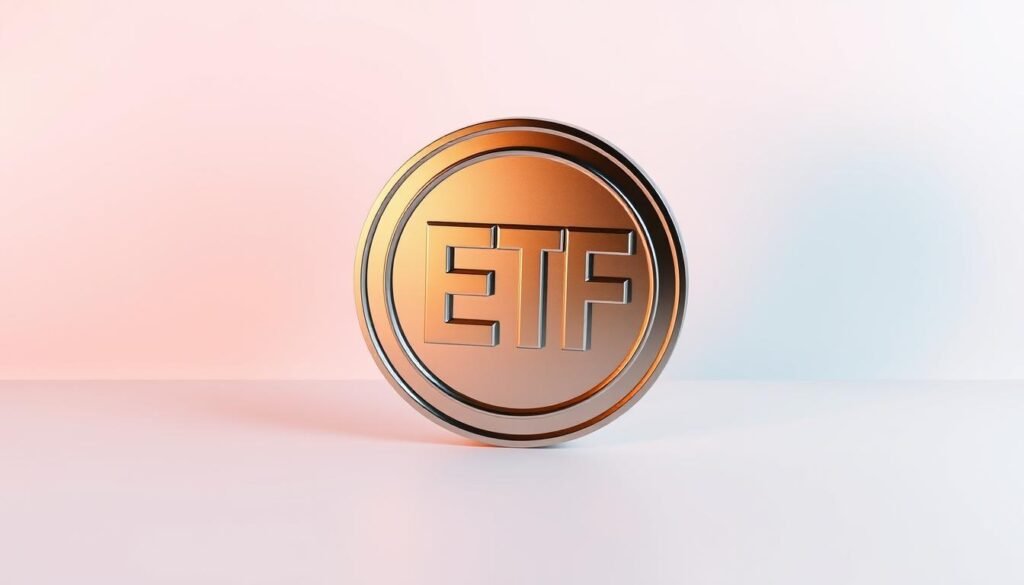
Grow Your Wealth with best ETFs Canada investors long term growth

Picture this: you meet a neighbour at a coffee shop who says they moved their savings into a few simple funds on the TSX and finally sleep well at night.
They liked low fees and clear rules. They chose familiar brands like Vanguard, iShares, BMO, TD and Horizons. Over a few years, small fee differences added up to real returns.
This article shows a straightforward way to build a diversified portfolio. You can pick one-ticket solutions such as XEQT or VEQT, or mix core Canadian holdings like HXT, VCN and VUN with international funds like VXC or XAW. Add bonds or a cash ETF like PSA to steady things.
Why it matters: low management costs and broad exposure let you own thousands of stocks and bonds without leaving the TSX. That helps you keep more returns while staying invested through market cycles.
- Why you’re seeing a new era of ETFs in Canada right now
- How we picked the best ETFs for long-term growth
- All-in-one growth picks you can set and forget
- Core Canadian equity ETFs to anchor your portfolio
- U.S. market exposure for long-term returns
- International ETFs to diversify beyond North America
- Bond and cash ETFs to balance risk when rates move
- Fees, structure and tax: small details, big impact
- Choosing the right mix for your risk tolerance and time horizon
- Your next step to build a resilient, long-term ETF portfolio
Why you’re seeing a new era of ETFs in Canada right now
Competition pushed fees down and widened the shelf of simple building blocks for portfolios. That change makes it easier for you to access broad market exposure without complex setups.
Lower fees, broader diversification, and fewer gimmicks
Major providers Vanguard, iShares, BMO, TD and Horizons cut costs and added products. You can now pick Canadian, U.S. and global index building blocks like HXT, VCN, VFV and VXC.
- Fee pressure: many funds now charge a fraction of what they did a decade ago.
- Wide coverage: single tickers can hold thousands of stocks, so you get diversification in one trade.
- All-in-one options: XEQT, VGRO and XGRO offer auto-rebalancing at fees near 0.2%, making a set-and-forget approach practical.
- Watch for gimmicks: new, niche products sometimes add complexity or cost without clear benefit.

Present-day context: what’s changed for you
Over the last years the product list grew from a shortlist to a full toolkit: Canadian, U.S., international, bond and cash options like ZAG, VAB and PSA. That shift helps you tailor a mix for savings goals, whether you favour hands-off funds or build your own index portfolio.
How we picked the best ETFs for long-term growth
We screened funds by cost, tracking method and how many markets they actually cover. That gave a clear way to compare options you might hold for years.

MER and total cost of ownership
Fees matter. Even a 0.10% MER gap compounds over decades, so we prioritized low management expense ratios and looked at hidden costs like trading spreads and tax drag.
Diversification across equities and bonds
We checked the number and type of holdings to avoid narrow exposure. You want Canadian, U.S. and global index coverage plus core bonds like ZAG or VAB to smooth returns.
Tax efficiency for RRSP, TFSA, and non-registered accounts
Account type changes the math. Swap structures such as HXT and HXS can convert distributions to capital gains and improve outcomes in taxable accounts.
- We favour broad, low-cost index building blocks (VCN, VFV, VXC) and scale leaders like iShares Core.
- Liquidity and tracking error were checked to keep implementation practical.
- Where relevant, we balanced duration in bonds and used tax-aware wrappers to reduce withholding impact.
For an applied comparison of allocation choices and sector concentration, see this note on concentrated tech exposure: QQQ tech exposure.
All-in-one growth picks you can set and forget
All-in-one funds package global markets into a single ticker so you don’t have to manage many accounts. They deliver broad exposure to stocks and bonds in one holding and keep rebalancing automatic.

All-equity growth ETFs: XEQT vs VEQT vs HGRO
XEQT and VEQT offer 100% equity exposure across global markets in a single etf, making them a simple choice if you want pure stock exposure. HGRO uses a swap structure to change the tax profile, which can help outcomes in non-registered accounts.
Blended growth ETFs: VGRO vs XGRO for an 80/20 mix
VGRO and XGRO target roughly 80% stocks and 20% bonds. They rebalance automatically and combine global equity with investment-grade fixed income. Typical fees sit near 0.20%, giving a low-cost, hands-off asset mix.
When one-ticket portfolios make sense for you
Choose a one-ticket approach if you prefer autopilot investing and fewer decisions during volatile markets. It works well in smaller accounts and for regular contributions.
- You gain behavioural benefits by staying invested.
- Compare implementation style ishares core or Vanguard rather than brand alone.
- Match the pick to your risk tolerance and time horizon.
Core Canadian equity ETFs to anchor your portfolio
Choose a handful of core Canadian trackers to give your portfolio a dependable domestic base. These picks keep your fees low while giving exposure to Canadian companies across sectors.
Low-fee leaders: HXT, VCN, XIC, ZCN
HXT uses a swap-based structure and posts an effective fee near 0.04% after rebates. That design can improve tax efficiency in non-registered accounts.
VCN, XIC and ZCN track broader all-cap indexes with MERs around 0.05%–0.06%. They add mid and small caps beyond the top 60 names.
"Fees are razor-thin across these Canadian equity leaders, so focus on account type and tracking method when choosing."
Coverage differences and when to favour all-cap over TSX 60
The TSX 60 centres on the largest companies. All-cap funds widen that scope and include more companies in mid and small caps.
If you want extra diversification across smaller firms, pick an all-cap fund. If you prefer the simplicity and tax traits of a swap structure, HXT can be the right core holding.
- When to use HXT: low fee and swap tax benefits in taxable accounts.
- When to use VCN/XIC/ZCN: broader holdings and more market breadth.
- Common ground: all four are liquid and trade easily on the TSX.
| Fund | Structure | Typical MER | Coverage |
|---|---|---|---|
| HXT | Swap-based | ~0.04% (after rebate) | TSX 60 |
| VCN | Physical | ~0.05%–0.06% | All-cap Canada |
| XIC | Physical | ~0.05%–0.06% | All-cap Canada |
| ZCN | Physical | ~0.05%–0.06% | All-cap Canada |
Tip: check holdings count and sector tilts. The Canadian market leans toward financials and energy, so balance with international exposure elsewhere.
U.S. market exposure for long-term returns
A sizeable slice of global market returns comes from U.S. stocks, and your implementation matters.
S&P 500 access: if you want classic blue-chip exposure, choose a Canadian-listed S&P 500 option such as VFV or the swap-based HXS. These track the s&p 500 index closely and make it simple to own the largest U.S. firms via the TSX.
S&P 500 and total market choices
For broader coverage that includes mid- and small-cap names, consider iShares Core U.S. Total Market (XUU) or Vanguard U.S. Total Market (VUN).
HXS uses a swap structure that can reduce taxable distributions in non-registered accounts while keeping tracking error very low.
Hedged vs unhedged and the role of currency over time
Hedged versions exist, but many prefer unhedged variants. Unhedged funds usually carry lower fees and let you capture currency moves that often balance out across decades.
- S&P 500 option: VFV or HXS for classic index exposure.
- Total market choice: XUU or VUN for wider U.S. coverage.
- Tax edge: swap-based HXS can change distribution profiles in taxable accounts.
- Currency: unhedged funds often win on cost and simplicity for long horizons.
Compare index rules, fee differences and your account type before deciding. Pair U.S. exposure with Canadian and international holdings to reduce home bias and smooth performance through market cycles.
International ETFs to diversify beyond North America
A world ex-Canada sleeve can balance heavy home bias and open new market opportunities. Use a single international core if you want broad exposure without many trades.
VXC and XAW both track broad global indexes excluding Canada. They cover developed and emerging markets and are close in composition. Fee and index differences have been modest, with one or the other sometimes showing a slightly lower MER over time.
Targeted exposure options
If you want more control, pair a developed ex-North America fund such as VIU with an emerging markets sleeve like VEE, XEC or ZEM. This lets you tilt toward regions or sectors you believe will outperform.
- VXC/XAW as one-stop: reduce home bias and capture stocks across Europe, Asia and emerging markets.
- VIU + VEE/XEC: finer control over developed vs emerging exposure.
- Emerging market funds add volatility but widen opportunity; a diversified etf limits single-country risk.
| Option | Index basis | Coverage | Typical role |
|---|---|---|---|
| VXC | FTSE Global All Cap ex Canada | Developed + emerging | Single international core |
| XAW | MSCI ACWI ex Canada | Developed + emerging | Single international core |
| VIU + VEE/XEC | Developed ex-NA + Emerging | Targeted tilt | Custom regional weighting |
Check holdings depth, index rules and structural notes before you buy. That helps you match the fund to your account type and planned investments.
Bond and cash ETFs to balance risk when rates move
When interest rates shift, a clear bond sleeve can reduce volatility in your holdings. Use a blend of aggregate and short-duration options to match your goals.
Stable core bond choices
ZAG and VAB are broad aggregate bond etfs with very low MERs (~0.08%–0.09%).
They mix government and corporate bonds to provide steady income and diversify risk.
Short-duration and tax-aware options
VSB uses shorter-term bonds to cut sensitivity to changing rates. ZDB is a discount bond ETF designed for improved tax efficiency in taxable accounts.
"Holding bonds helps fund rebalancing during volatility and provides reliable income to redeploy when markets improve."
- Core aggregate etfs like ZAG or VAB deliver broad, investment-grade exposure at low cost.
- ZDB’s discount structure can be more tax efficient in non-registered accounts.
- VSB cushions price swings when rates move quickly.
- For short-term parking, PSA and other HISA-style funds offer liquidity with competitive interest.
| Option | Role | Typical MER / Feature |
|---|---|---|
| ZAG / VAB | Core aggregate bonds | ~0.08%–0.09%; govt + corp |
| ZDB | Tax-aware bond | Discount structure for taxable accounts |
| VSB | Short-duration | Lower rate sensitivity |
| PSA / HISA | Cash-like parking | High liquidity; competitive interest |
Match bond term to your horizon: shorter funds for less rate risk, broader aggs for a core ballast that pairs with your stocks.
Fees, structure and tax: small details, big impact
How a fund is built matters as much as its headline fee. Small structural choices can change whether you pay tax today or later, and that affects your after-tax returns.
Why swap-based funds like HXT and HXS can improve tax outcomes
Swap-based structures can convert regular dividend payouts into capital gains or synthetic income. That often reduces current taxable income in non-registered accounts.
HXT (TSX 60) and HXS (S&P 500) aim to track closely while lowering taxable distributions. That can be attractive if you sit in a high tax bracket and want cleaner annual tax treatment.
Withholding on U.S. dividends and where to hold stock exposure
Canadian-listed U.S. equity funds may face a 15% U.S. withholding on dividends. Recovery of that tax depends on your account type and whether you can claim foreign tax credits.
Account placement matters: RRSPs can often avoid U.S. withholding when you hold certain U.S.-listed options directly, while TFSAs usually cannot. Non-registered accounts require more tax awareness.
- Small fee differences and fund structure affect after-tax returns more than you might expect.
- Swap funds like HXT/HXS reduce current taxable income and keep tracking error low.
- Understand withholding rules for TFSA, RRSP and non-registered accounts before allocating U.S. equity.
- Hedged funds cut currency swings but raise costs; many favour unhedged to keep fees down.
| Topic | Typical effect | When to consider |
|---|---|---|
| Swap-based structure | Lower taxable distributions; tight tracking | Taxable accounts, high marginal rate |
| U.S. dividend withholding | 15% on many Canadian-listed U.S. funds | Non-registered & TFSA need planning; RRSP often exempt |
| Hedging | Less currency risk, higher cost | Short horizons or currency concerns |
Choosing the right mix for your risk tolerance and time horizon
Your asset mix starts with two questions: how many years until you need the money, and how much market volatility you can stomach without selling.
If you prefer set-and-forget, a one-ticket option such as VGRO or XEQT ties an asset mix to a labelled risk level. These etf choices make rebalancing automatic and simplify contributions.
If you want more control, combine Canadian trackers (HXT, VCN, XIC, ZCN) with U.S. exposure (VFV, XUU, VUN, HXS) and international funds (VXC, XAW, VIU, VEE). Add bonds like ZAG or VAB for stability and PSA for short-term cash needs.
Match allocations to goals: near-term money stays in cash or short bonds. Mid-horizon funds can sit in balanced mixes (80/20 or 60/40). For a longer horizon, higher equity weights accept bigger swings for potential higher returns.
"Start with your risk tolerance and revisit allocation when life changes, not because the market makes noise."
- Use simple index exposures across Canada, the U.S., and world ex-Canada to avoid concentration.
- Let labelled portfolios guide you, or build a DIY mix if you want custom tilts.
- Rebalance periodically and keep decisions aligned with your planned time frame.
Your next step to build a resilient, long-term ETF portfolio
Open the right accounts, pick a clean list of tickers, and make your first trade this week.
Start by opening a TFSA, RRSP and a non-registered account with a Canadian online broker. Learn simple order entry ticker, units, market or limit and place a small initial trade.
Decide if you want a one‑ticket etf such as XEQT, VEQT, VGRO or XGRO, or build a core mix: HXT/VCN + VFV/XUU/VUN/HXS + VXC/XAW. Add bonds (ZAG, VAB, ZDB, VSB) and a cash ETF like PSA for liquidity.
Automate contributions, use limit orders when helpful, track fees, and revisit your asset mix each year or after major life changes. Staying invested, keeping costs low and holding diversified index funds is the clearest way to improve your returns over years.
If you want to know other articles similar to Grow Your Wealth with best ETFs Canada investors long term growth you can visit the category Investing.






Leave a Reply